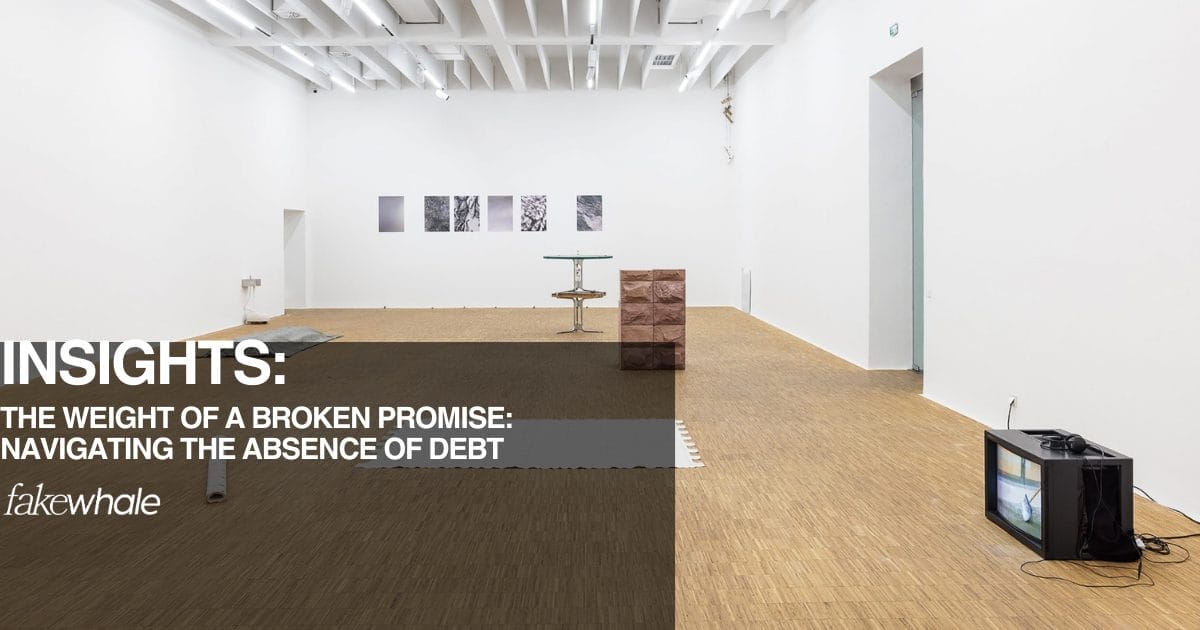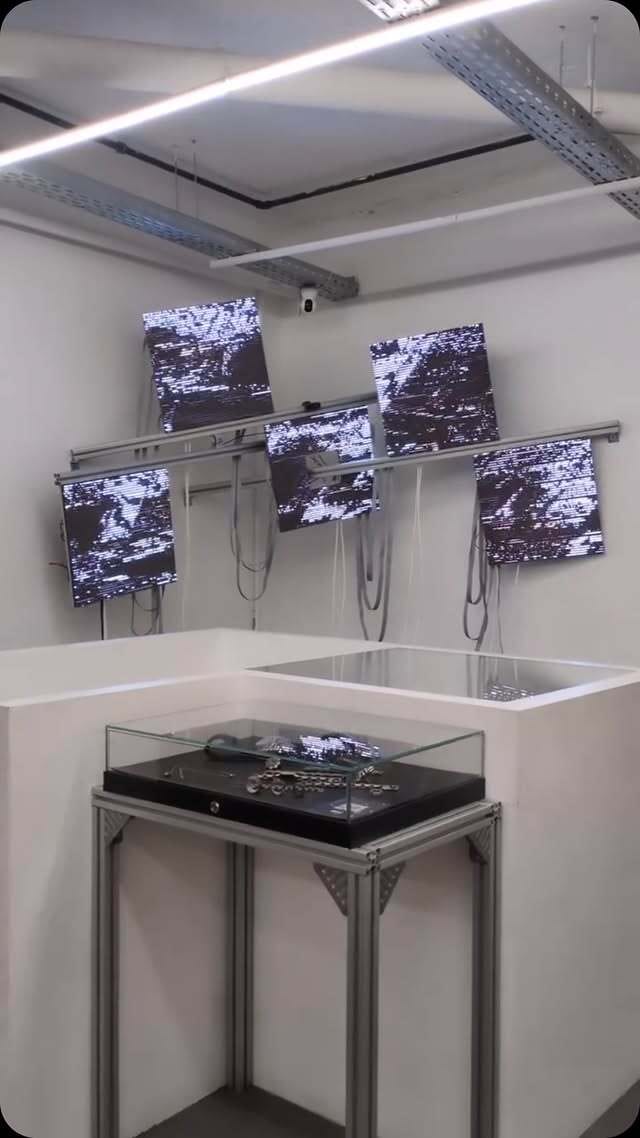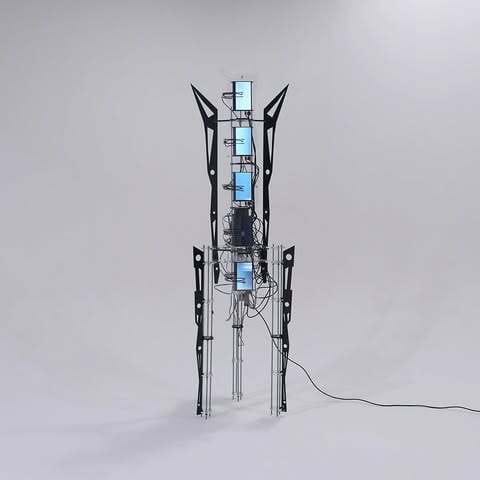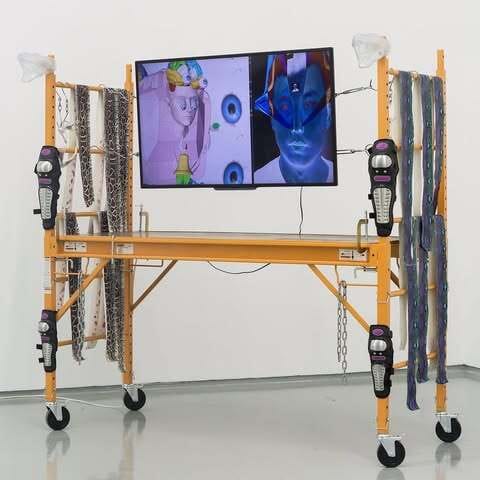Hello,
Welcome to issue #36 of the Fakewhale Newsletter!
Stay ahead with this week’s ART MARKET weekly curation to uncover standout gems on Objkt and explore the latest Fakewhale Log publications.
ART MARKET: WEEKLY CURATION
Explore our weekly curation thread on X to uncover the latest works part of the ART MARKET ↓
INTERVIEWS
ArtVerse in Conversation with Fakewhale
Sebastien Borget has spent years shaping the digital landscape as co-founder of The Sandbox, one of Web3’s most influential platforms. With ArtVerse, he extends his vision into digital art, establishing a dedicated space in Paris where technology and creativity intersect, shaped by the curatorial direction of Grida.
ArtVerse redefines how digital art is presented and experienced, moving beyond screens and blockchain transactions to create a physical environment for engagement, dialogue, and exchange. Co-founded by Borget and Arthur Madrid, the initiative bridges digital and physical art, providing a space where artists, collectors, and institutions connect in meaningful ways.

“Olympic Digital Art Exhibition: Art Arena, The Play of Movement and Spirit” at Artverse
While digital art has often existed at the margins of the traditional art world, ArtVerse challenges that positioning through curated exhibitions, interactive installations, and collaborations with key players like Christie’s, Tezos, and SuperRare. Its mission extends beyond visibility, seeking to reshape the conversation around digital art and its role in contemporary culture.
In this interview, we speak with Sebastien Borget and Grida about ArtVerse’s curatorial approach, its role in expanding accessibility, and how the intersection of technology and art is shaping new creative possibilities. ↓
INSIGHTS
Debt at Salzburger Kunstverein
Debt at Salzburger Kunstverein explores the fractures left by unfulfilled promises, rendering absence and imbalance tangible.

“Debt” at Salzburger Kunstverein, 2024. Photo: kunst-dokumentation
“Debt is a distorted promise, an idea that begins with the intention to create balance but ends up generating tension, control, even guilt.” This thought came to mind while examining the images of this exhibition, a space that feels suspended in time, empty, yet heavy. It’s intriguing, isn’t it? We often think of debt in quantitative terms: numbers, balance sheets, interest rates. But here, debt takes on a different form, one that is far more visceral and tangible. It speaks through bodies, objects, and spaces, through everything that gets caught in the margins of an unfulfilled promise, in the voids left behind by compromise or, perhaps, failure.
The exhibition layout amplifies this impression. The space seems designed to highlight absence, transforming each work into an isolated island that demands attention. There’s no easy narrative tying the pieces together, no visual shortcuts to understanding. Every object, every element feels deliberate, forcing you to pause, to grapple with its presence and its meaning. It’s as if you’re piecing together a fragmented story, one where the gaps are as significant as what’s shown. This sense of incompletion isn’t frustrating, it’s evocative, inviting you to lean in and confront the unsaid.
Read the full article ↓
In this Authors’ Insights feature, Matteo Giovanelli delivers an incisive review of Vladislav Markov’s "blood thinner, low-dose aspirin, best painkillers for kids" at The Address Gallery, highlighting its immersive blend of reconfigured space, layered self-portraiture, and ironic art-market commentary.

Installation view “blood thinner, low-dose aspirin, best painkillers for kids” at The Address Gallery, Brescia, 2024. Photo by Alberto Favara. Courtesy The Address Gallery, Brescia.
“It’s Friday night, November 15, I’m entering The Address Gallery building, a stunning space in a private courtyard in Brescia’s historical city centre. Through the passage between the street and the gallery, I can just hear the chaos of the opening, multiple voices and sounds from the audience joining the show. This time, the main character on stage is Vladislav Markov, a New York-based artist born in Magadan (Russia) in 1993, who’s sitting near the entrance talking to friends and observing the crowd, covered in multiple layers of black clothes and wearing a balaclava. He’s clearly injured, holding a crutch with his right hand, a cigarette in the other. It’s pretty hilarious, his injury ironically mirroring the title ‘blood thinner, low-dose aspirin, best painkillers for kids’, making me see the exhibition through a different lens, thinking about the relationship between the artist and painkillers — is he faking it? Up to you.”
Continue reading…
CONTEMPORARY BLOG
That wraps this week’s issue of the Fakewhale Newsletter, be sure to check in for the next one for more insights into the Fakewhale ecosystem!






